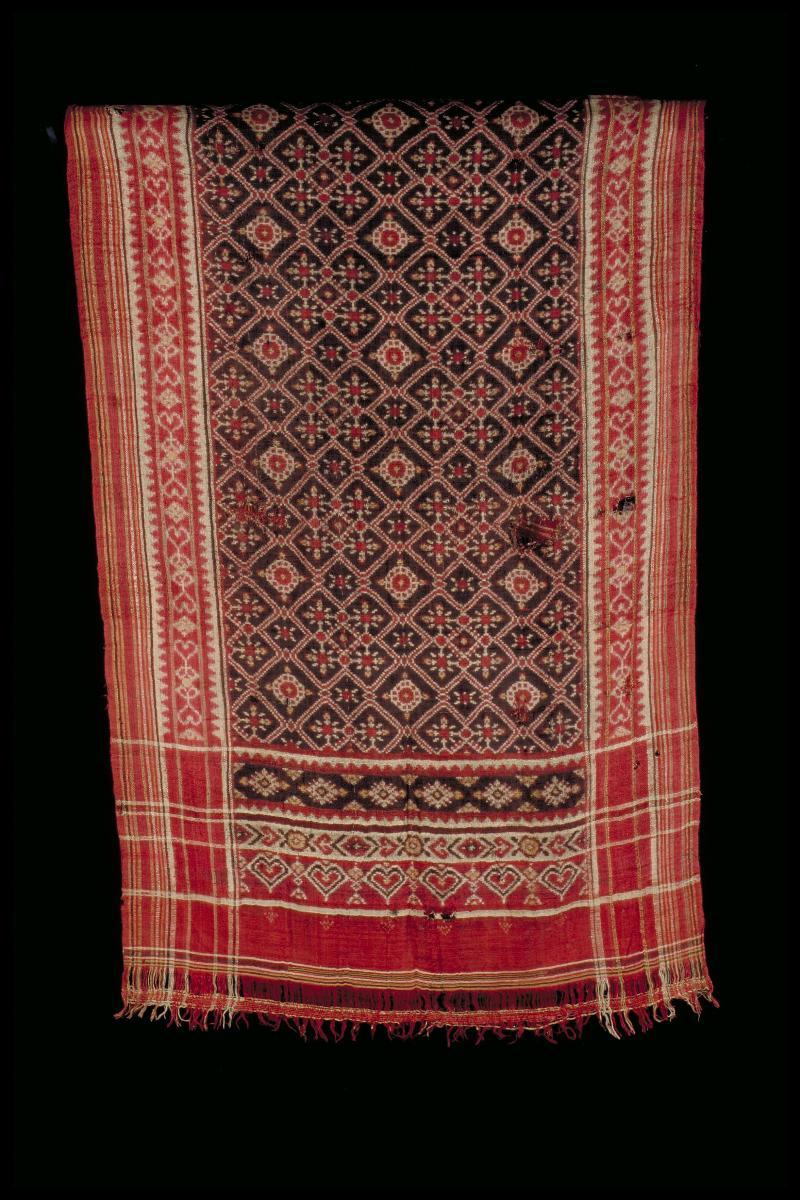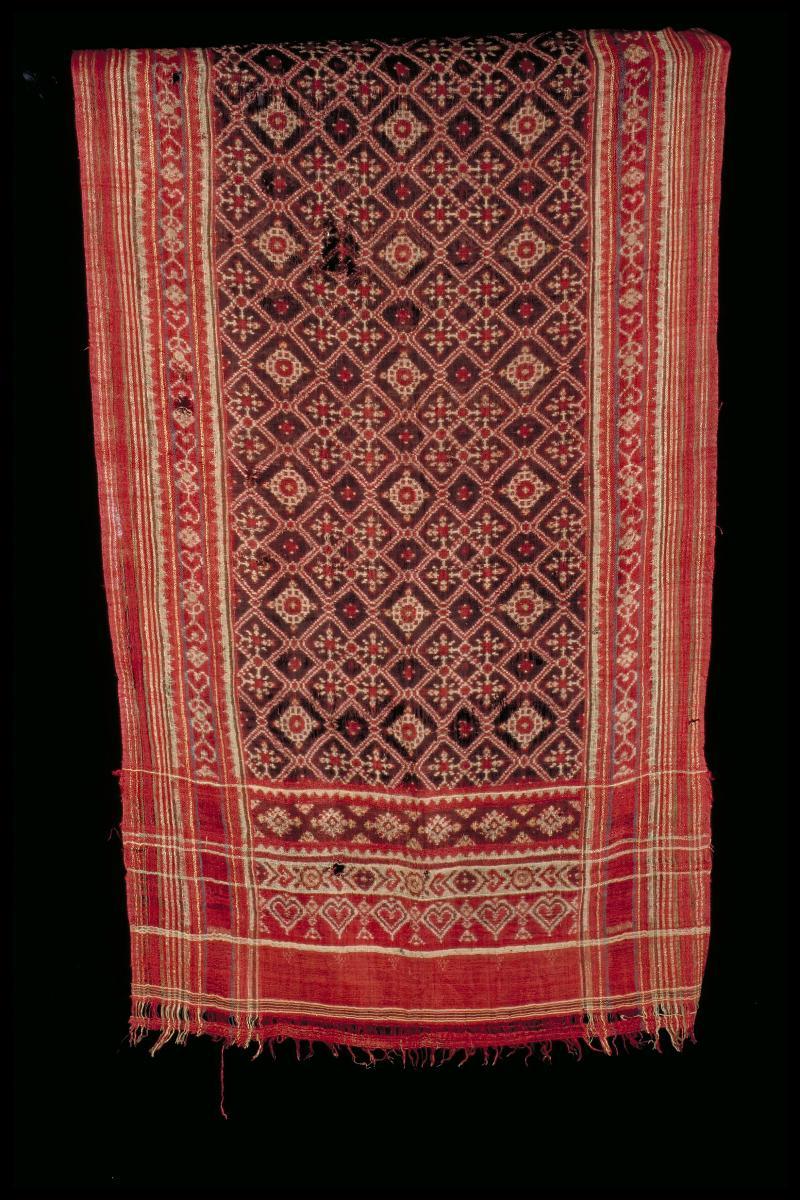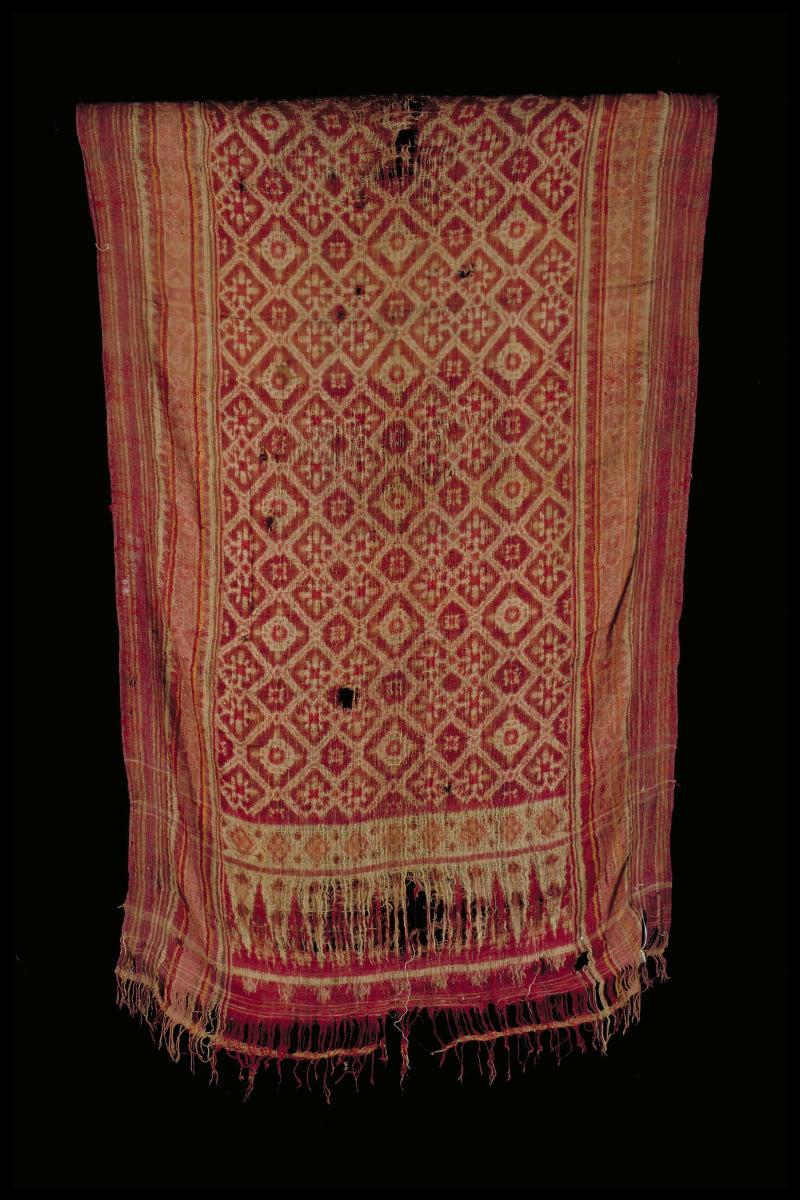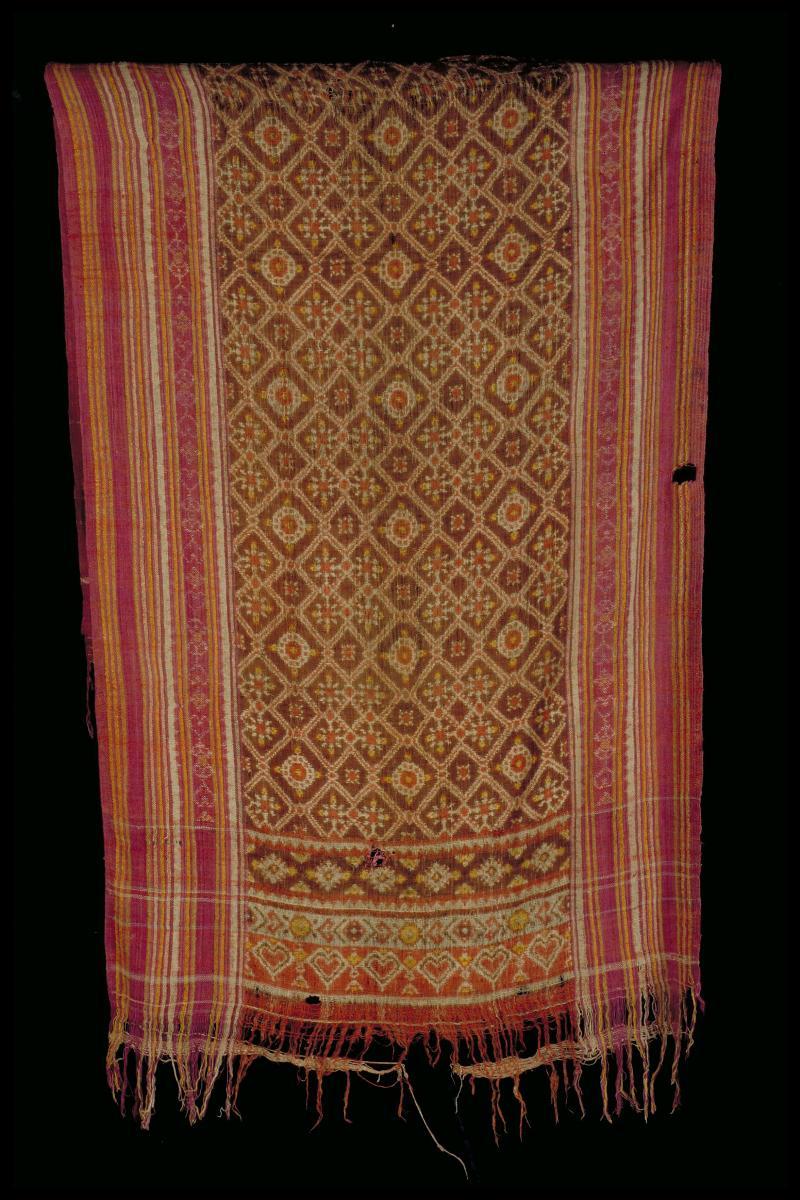The centrefield of the shouldercloth features floral designs in rhomb-shaped motifs. This silk textile was imported from Gurajat in India and woven by the double ikat technique, where the horizontal and vertical threads are tied and dyed before the fabric is woven. Such textiles, known as ‘patola’ (singular, ‘patolu’), were symbols of rank as they were adopted by local rulers and wealthy traders as garments. Patola became heirlooms, and also came to be used in local ceremonial occasions as covers over corpses and exchange of wealth during marriages. Patola designs changed or reinforced some design features of Southeast Asian textiles. It formed an important part of trade between India and Southeast Asia even before European influence became dominant.















